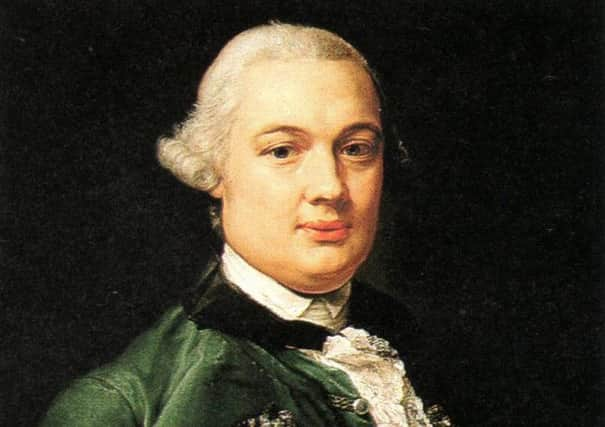James Bruce '“ the Abyssinian traveller


Both are long gone but one other place which we can still visit is the monument in Larbert Old Churchyard raised in 1785 by James Bruce the celebrated ‘Abyssinian Traveller’ to mark the grave of his wife Mary Dundas. Today it is his own memorial but at the time of Rabbie’s visit the great man was still living in Kinnaird House where he died some seven years later.
Bruce was born in 1730 at Kinnaird and like aristocratic sons was sent to Harrow School where he excelled with one master saying had an “amiable temper and an extraordinary aptitude for learning”. Both characteristics stood him in good stead as he embarked on an adventurous life first running a wine merchant’s business owned by the father of his first wife, which took him to the continent in search of fine vintages and in the process learning several languages: he was said to have been fluent in 13 tongues including those of parts of Africa and the Orient.
Advertisement
Hide AdAdvertisement
Hide AdThe death of his wife after a short marriage set him off on his true vocation – exploration. At the invitation of Government Minister Lord Halifax he became Consul in Algiers where he began his travels through the deserts of north Africa meeting and living with Berber tribesmen and later seeking out and finding the source of the Blue Nile. On his return home in 1773, his adventures soon became the stuff of legend and he was derided by many because his tales seemed so outlandish that people though he was making it up! However, King George III was greatly impressed by what he heard though the King’s ‘favourite’ Fanny Burney was more taken by his great size – he was six foot four inches tall and ‘very corpulent’. She said: “Mr Bruce’s grand air, gigantic height and forbidding brow awed everyone into silence – he is the tallest man you ever saw free of charge”.
The adventures were eventually published in 1790 but Rabbie’s visit three years earlier proves that Bruce’s fame was already widespread – he was far better known at the time than the poet. James Bruce had married his second wife Mary Dundas in 1776 and Burns commented in his journal that the fancy monument at her grave was raised by Bruce because of his guilty conscience at the way he had treated her! Coming from Rab that’s pretty rich! It is certainly a monument to be admired even today when it has been stripped by time and neglect of many of its original decorations. It is a master- work of the patternmakers and moulders of Carron Works decorated with plaques representing different aspects of his life in Africa including lions and an elephant.
James Bruce settled down in Kinnaird and the man who had survived the roughest conditions in Africa unscathed died when he fell down the stairs at the house while we are told “handing a lady to her carriage”. No mention of the bottles of claret that no doubt graced his table.
He once said that he had seen some of the greatest sights that the world has to offer but none compared to the view across Falkirk towards Larbert, the Forth and the Ochil Hills.
I knew I had one thing in common with him ... oh yes, and the claret.